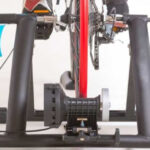As a passionate cyclist, I’ve become a dedicated data enthusiast. Like many, I utilize sports watches to meticulously record every activity, from intense indoor cycling sessions to adventurous mountain biking trails, scenic road cycling routes, challenging bikepacking trips, invigorating hikes, runs, and even snowshoeing expeditions. For those truly memorable rides, I enhance my Strava entries with detailed descriptions and captivating photos captured with my phone or mirrorless camera. My goal is simple: to comprehensively document my cycling journey and activities.
When pushing my limits during road bike workouts, my bike computer, mounted firmly on the handlebars, becomes my central hub, displaying crucial metrics like power output, heart rate, and lap times. Even on more relaxed, unstructured rides, I often rely on a wrist-worn device, but the detailed data capture of a bike computer is always in mind for deeper analysis later.
In the immediate aftermath of a ride, the raw data might seem less significant. The power meter serves its primary function – guiding workouts and estimating Training Stress Score (TSS). However, the true value of meticulously collected data emerges over the long haul.
Having access to years of accumulated data encompassing activity types, locations, timings, and cycling power curves provides invaluable insights when viewed across years. Analyzing this historical data year-by-year offers a unique and, in my opinion, genuinely fascinating perspective on my cycling evolution. The GPS tracks of every ride are particularly rewarding to revisit.
Platforms like statshunters.com, which beautifully visualize all Strava activities on a unified map, amplify this enjoyment. Exploring this map periodically often unveils forgotten gems – a unique route from years past, a squiggly line sparking a memory. Clicking on these tracks leads back to Strava, unlocking photos and descriptions, instantly transporting me back to that specific ride. Sometimes, simply reviewing the data itself is enough to rekindle vivid memories. These visualizations are also incredibly useful for identifying unexplored areas. Just recently, while browsing my Statshunters map, I noticed an uncharted village just 25km away – a perfect addition to my cycling “must-ride” list once the snow clears.
In conclusion, embracing data collection with Bike Computers transforms cycling from simple rides into richly documented experiences, offering both immediate performance insights and a treasure trove of memories and future adventures to explore.

